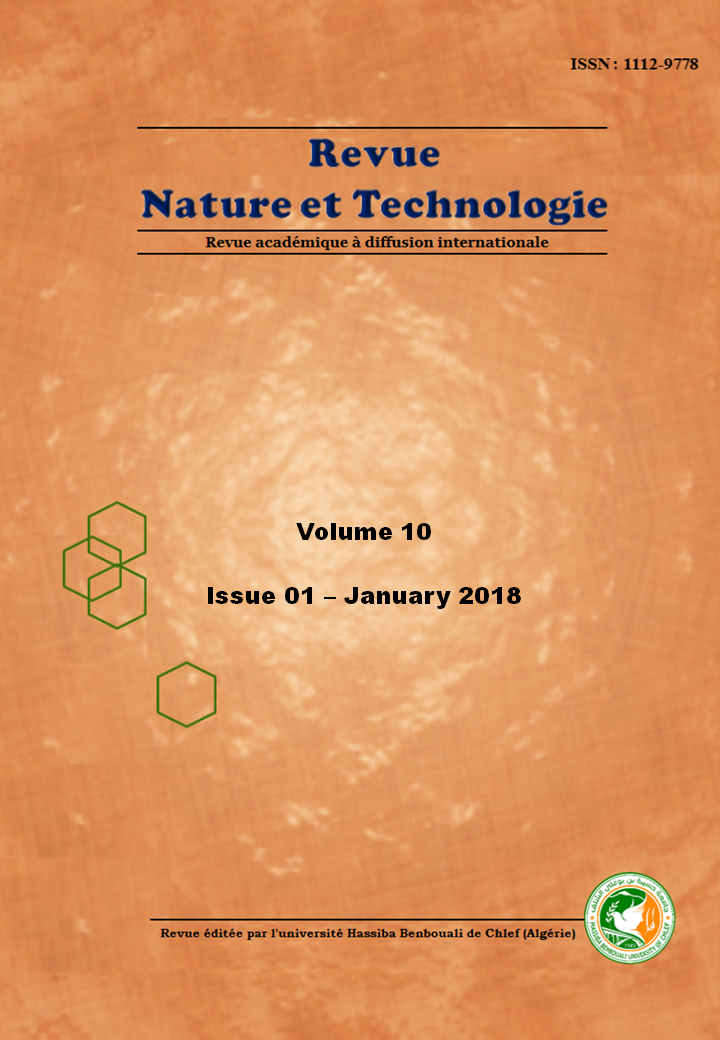Influence of fiber orientation on the behavior of composite pipes subject to internal pressures
Keywords:
Multilayer composite pipe, MEF, Internal pressure, Constraint, LayersAbstract
In the field of engineering the matrices reinforced by synthetic fibers have become widely used in view of the high specific stiffness and resistance they offer. The main objective of this work is to simulate and analyze the mechanical behavior of a multilayer composite pipe for different fiber orientation angle. A finite element numerical model (MEF) under ANSYS has been developed to determine the displacement fields for a multilayer pipe under internal pressure. Subsequently, a parametric study was carried out to enhance the effect of the mechanical and geometrical characteristics of the materials constituting the multi-layer pipe. From the results obtained, it was found that the displacement fields are clearly influenced by the orientations of the composite layers.
References
Xia Xia M, Takayanagi H, Kemmochi K., Analysis of multilayered filament-wound composite pipes under internal pressure, Compos. Struct., 53 (2001) 483-491.
Martens M, Ellyin F., Biaxial monotonic behavior of a multidirectional glass fiber epoxy pipe Compos., Part A - Appl. Sci. Technol., 31 (2000) 1001–1014
Abdul Majid M. S., Assaleh T. A., Gibson A. G., Hale J. M., Fahrer A., Rookus C. A. P., Hekman M., Ultimate elastic wall stress (UEWS) test of glass fibre reinforced epoxy (GRE) pipe Compos., Part A - Appl. Sci. Technol.,42 (2011) 1500–1508.
Lekhnitskii S.G., Anisotropic plates, New York: Gordon and Breach, Science Publishers; 1968. 20 p.
Lekhnitskii S.G., Theory of elasticity of an anisotropic body. Moscow: Mir; 1981.
Durban D., Finite Straining of pressurized compressible elastoplastic tubes, International Journal of Engineering Science, 26 (9) (1988) 939-950:
http://dx.doi.org/10.1016/0020- 7225(88)90023-7
Sayir M. B. and Motovalli M., Fiber-reinforced laminated composite tubes with free ends under uniform internal pressure, Journal of the Mechanics and Physics of Solids, 43 (11) (1995) 1691-1725. http://dx.doi.org/10.1016/0022- 5096(95)00055-N
Salzar R. S., Functionally graded metal matrix composite tubes, Composites Engineering, 5 (7) (1995) 891-900: http://dx.doi. org/10.1016/0961-9526(95)00023-G
Tarn J.Q and Wang Y.M., Laminated composites tubes under extension, torsion, bending, shearing, and pressuring: a state space approach, International Journal of Solids and Structures, 38 (2000) 9053-9075: http://dx.doi.org/10.1016/ S0020-7683(01)00170-6
Volnei Tita I, Mauricio Francisco, Caliri Júnior I; Ernesto Massaroppi Junior II, Theoretical models to predict the mechanical behavior of thick composite tubes, Materials Research, 15 (1) (2012) 70-80: http://www.scielo.br/scielo.php?script=sci_arttext&pid=S1516-14392012000100011
Sülü I. A., Temiz S., Stress analyses of multi-layered composite pipes subjected to internal pressure, Academic Journal of Science, CD-ROM. ISSN: 2165-6282 :: 04 (03) (2015)187–194. http://www.universitypublications.net/ajs/0403/pdf/R5ME335.pdf

Downloads
Published
How to Cite
Issue
Section
License

This work is licensed under a Creative Commons Attribution 4.0 International License.
- All publications of "Nature & Technology Journal" are available under CC-BY Creative Commons Attribution 4.0 International which allows sharing, copying, reproduction, distribution, communication, reuse, adaptation by all means, in all formats and under all licenses.
- Any exploitation of the work or derivative works, including for commercial purposes, is possible. The only obligation is to credit the creators of the authorship of the original works, to indicate the sources and to indicate if modifications were made to the works (obligation of attribution).
This License gives:
- Nature & Technology Journal the right to develop, promote, distribute and archive the article set cited above (including, without limitation, the right to publish the work in whole or in part in any form whatsoever) and ensure the widest dissemination.
- The author (s) reserves the right to use all or part of this article, including tables and figures of his own works, providing that the appropriate recognition is given to the publisher as the holder of the copyrights, and the right to make copies of this article for its own use, but not for sale.




